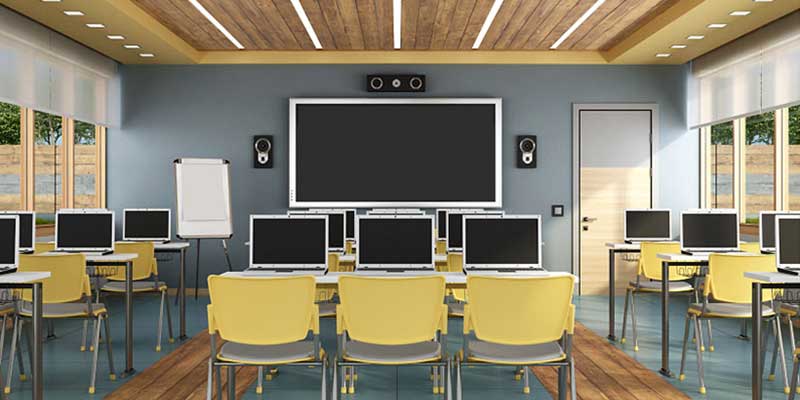Educational News
How EdTech Impacts the Classroom

With online learning becoming a central component in our children's education due to COVID-19, the Education Technology industry, or EdTech, has been pushed even further to develop and improve various forms of devices, software, and applications to meet this increased demand. What was once a steadily growing trend is now a necessity. Let's take a look at how EdTech impacts the classroom and assists your child in their academic pursuits.
Firstly, technology has made education more accessible. The internet is able to connect every part of the world together, and EdTech leaders had previously been using virtual classrooms to connect students and teachers in ways that had proved too difficult in person. Today, it isn't distance but proximity that is our limitation to overcome. Creating a virtual classroom environment which simulates the real thing creates a sense of normalcy for students, and helps them connect to teachers and peers with less barriers. The virtual classroom can not only provide a 1-for-1 environment for the student, but can even enhance the traditional learning experience. By integrating specially designed software, video tutorials, and other interactive content, the virtual classroom creates a personalized, engaging experience for the child.
Another area of interest to EdTech over the past few years has been integrating artificial intelligence into the classroom. While we may think of AI as a friendly robot or a talking computer, the truth is that primitive AI systems are all around us. Any technology we interact with that can learn from us contains AI elements. Most often we encounter them as suggested content on our various social media feeds or search engines like Google matching our tastes and preferences. Another term for AI is machine learning, and kids encounter it just as much as their parents do. While what we would consider proto-AI technology is all around us, it will be a long time before virtual tutors are conducting classes with our kids. What EdTech companies are looking into now are integrating how machine learning can help educators cater their approach and content to each individual child. Being able to track progress digitally, measure understanding and engagement, and adjust a child's curriculum accordingly is a benefit both to students and to educators.
The last area of EdTech research we'll go over is automation. Since we cannot keep kids at home indefinitely, automation may prove a safe and effective way to limit contact. Technology like facial recognition, data analysis, and robotic kitchens all contribute to a school setting which may be safer and easier to control the points of person-to-person connection. While automation has largely been looked into as a time-saving measure, EdTech companies can also shift their priority to limiting exposure of students. As food ordering services have expanded, automation has also entered the food service industry in new ways to meet demand. Innovations from this sector can also benefit the school setting, and may be a safe and efficient way to continue to provide the meals that so many families rely on for their kids.
Technological innovation can often feel as intimidating as it can exciting. The important thing to remember is that technology is a tool, and the goal of any tool is to improve our lives. If you would like to learn more about how technology can be integrated into your child's education, click here.



